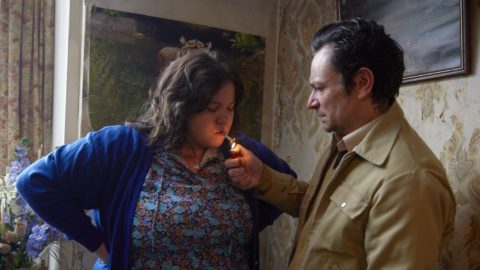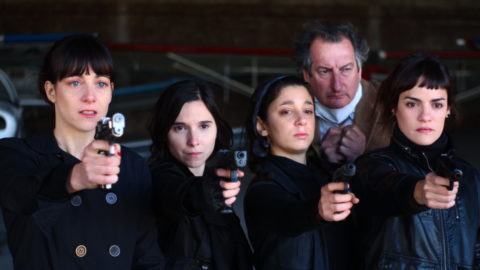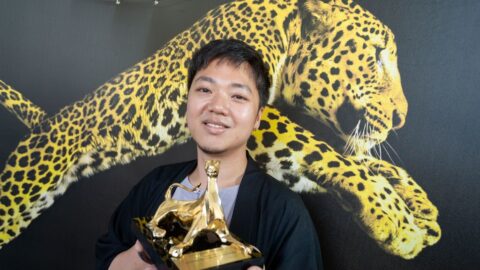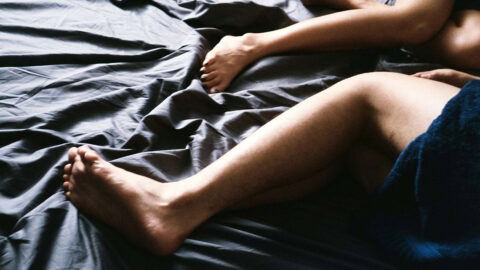Locarno Interview: Virgil Vernier
Located roughly 15 miles southwest of Nice, in the Valbonne valley of southern France, Sophia Antipolis is one of a growing number of semi-autonomous technology parks scattered around greater Europe. For most, these hubs of biotechnology and computer research science are curiosities at best, and beacons of unchecked capitalism at worst. For director Virgil Vernier, Sophia Antipolis is a place of more symbolic resonance, less an emblem of progress than a locus of moral decay and metaphysical mystery, and as such a sort of microcosm of France’s current cultural climate.
Named after and set in this enigmatic technopole, the 41-year-old Vernier’s new feature concerns a handful of loosely connected characters left searching for emotional and spiritual renewal in this most indifferent of settings. Structured in a roundabout fashion, the film follows three primary characters—a Vietnamese woman who joins up with a local cult, a young man who falls in with a right-wing paramilitary outfit, and a young girl whose friend, Sophia, recently burned to death in a warehouse fire—and a handful of peripheral figures through a series of deceptively serene vignettes that build with a subtle cumulative poignancy. As in his previous film, Mercuriales (2014), a similarly surreal urban social study, Vernier exhibits a rare knack for evoking the ennui of modern life and the ghosts that haunt the margins of even the most unassuming environments. Shot on beautifully textured 16mm, Sophia Antipolis imaginatively depicts an ostensibly alien landscape with just enough real world detail to genuinely unsettle.
Following the world premiere of Sophia Antipolis at the 71st Locarno Festival, Vernier sat down to discuss the film’s virginal quality, how to democratically convey a political ideology though cinema, and how shooting on film can transform the trivial into the mythological.
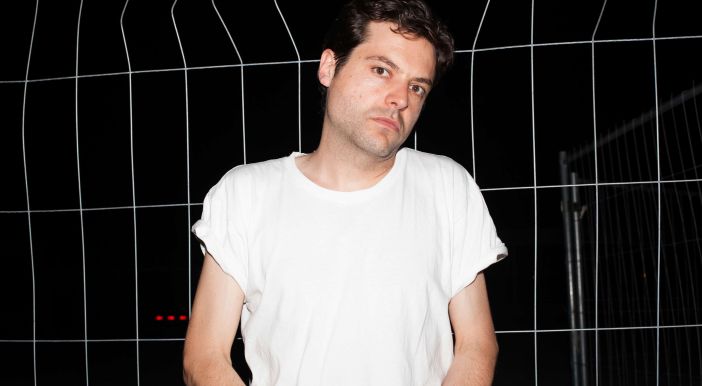
Many people outside of France might not be familiar with Sophia Antipolis. Can you give us a brief history of the development of this region, and where the idea originated to make a film there?
In a way, it’s better for me if it stays a fantasy country, a utopia. It would be great if somehow the audience is not sure if Sophia Antipolis really exists, or if it’s a dystopian land coming straight from the mind of the director. But it’s true in other ways that I like the idea of the movie being set in a very realistic place that you can find on Wikipedia. Sophia Antipolis was imagined and built from the ’70s through the ’80s in the south of France, and the original model that the architect had in mind was Silicon Valley in California. In the ’70s the French Riviera was seen as a new place for tourism, for a new kind of rich person, and they wanted to rebuild it in an American way, like a Florida or Las Vegas or Los Angeles. So they created a lot of very American-style buildings, to expand tourism, and like Silicon Valley it would be a place that scientists could do research.
What was your relationship with the region prior to the film? Had you visited?
My grandmother has a little hotel near Sophia Antipolis, and since my birth many of my vacations and holidays were spent there. When I would leave the Nice airport I would see highway signs with the name Sophia Antipolis, but even then I knew nobody went there. It’s only for people who work there—nobody lives there. So when I was a kid I would fantasize about this world, and I imagined it as an ancient Greek city, or perhaps a city of the future. And when I began thinking about it again as an adult, I was still fascinated by this world and all that it carries, so I thought to myself that it would be a great point of departure for a feature film.
Settings have played key roles in both of your films. When you’re formulating an idea for a film, are you beginning with locations or landscapes and conceptualizing from there?
There are a lot of fascinating places, but perhaps just one thing that makes them interesting, so you don’t make a film about it. But when you find a place where, say, the name is very exciting—where it carries something very specific with it—or when you find a landscape that has a lot of history, or can carry a lot of fictions, these are the settings that give you the desire to film them. For Sophia Antipolis, it was the name—and within it, a real name, Sophia—that made me think this could be a kind of film noir.
How did you come to the main plot thread of a burned girl left dead in a building? Is this something that occurred in the area?
It’s not based on a specific incident. It’s inspired by a lot of the sad and ordinary violence you read about in the daily newspaper. Each day it seems like you read about a girl who’s been killed. In France there’s a section in the newspaper that lists every crime that takes place in the city, and you read it and say to yourself, fuck—the way it’s presented, it’s just like you’re reading the sports section. It’s heartbreaking. So I wanted to make a film where I would take seriously one of these ordinary crimes and shed light on it. But I created this particular incident for the film, it’s not based on a real event.
I understand that it took a number of years to write the screenplay. Was the episodic construction in place from the start, or did that develop as you were gathering ideas and stories?
It was similar to how you describe, kind of a back-and-forth process. At the start you come with your fantasies, your imagination, and along the way you face some reality, and sometimes you take documents from reality and put it in the film, and just continue on like this. And then there are other moments where you try to apply your fantasies and see if it works naturally with the people acting in the film and with the reality taking place at the time of the shoot. For example, at the beginning I imagined and had wanted to cast a Filipino woman in one of the roles, but I couldn’t find a Filipino woman. I ended up finding a Vietnamese woman. So I had to adapt my fantasy—it was back and forth like that, between fantasy and reality.
How did you come to the circular construction of the narrative, and how thought out were the individual situations in relation to its greater arc?
For Mercuriales, I had a dogma: I didn’t want to structure it too much. I mustn’t put too much friction on things, and just let it happen naturally, through improvisation and things like that. But with Sophia Antipolis, I wanted to push differently with a very scripted way of building the film, in sequence. On the other hand, I wanted the actors to be comfortable and to be able to deliver the dialogue in their natural voice. I give precise details on the intentions behind the dialogue, but I don’t want to make the actors play in a conventional way, or a classical way.
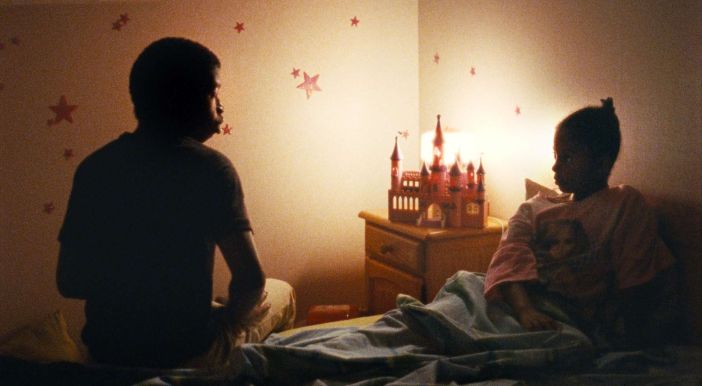
What was the process like getting nonprofessionals to adapt to your methods? Is it difficult to get them to the point where they’re naturally performing in the slightly affected style you utilize?
What I like is the fragility of each person I choose, and I put them in a very rigid cinematic shape. I tell them to imagine they’re on the theater stage: you don’t have to move, you just have to deliver the dialogue. It’s not real life, it’s cinema, so you have to follow these rules. With this film it was a very long process. It took more than a year to find the entire cast. Some of the actors are professionals, but they’re not famous, nobody knows them. I wanted the film to have a kind of virginal quality. I don’t want to make a film where the audience recognizes an actor from another movie. I try and choose them for their charm, for their natural behavior or way of speaking. I do give them the script, but I’m so happy when they bring another aspect to the character that I hadn’t imagined. It’s a way for them to take the characters for themselves.
Where did you find the actors? There are a number of unique characters in the film, the kinds of people you don’t necessarily see on a daily basis.
Initially I do what most people do: I post on Facebook, on every social media channel. And then, with a colleague, I went to the streets and the subways, and into Sophia Antipolis and other parts of France, and we listened and looked for people who sounded or resembled people in the script. To describe it is not very interesting, but it’s a big adventure. And it can be very exciting because you occasionally find some people that are more interesting than what you had written. Like I said, it took more than a year to find everyone, and then to work with them, to see if they’re not too shy in front of the camera, and if they have that unique charm I’m looking for in every actor. Even the secondary roles have to have this charm.
Did the episodic nature of the film mean you were you giving the actors only portions of the script corresponding to their scenes?
I preferred to give them only their scene, because if they had more they might begin to imagine a lot of things, and maybe they wouldn’t understand some of my intentions. I try not to drop them into a film where what they do will be used against them. I try to tell them not to ask themselves too many questions, to just be there at the time of the shooting. The only one who had concerns was the guy who plays the host of the cult meeting, who is a real Scientologist. For this part I had thought for a long time that I would use a Jehovah’s Witness, because I was very fascinated with them. I presented myself as a lost sheep looking for religion, and they hosted me in their church. In the end I didn’t find someone there who was as strong as I wanted, so I turned to Scientology in Paris, and I found this guy who tried to hypnotize me, and it was very fascinating in a way. Scientologists are very strong—they’re not so ridiculous. They are very much of today’s mind. In some ways I was very close to becoming a Scientologist! [Laughs] But I felt good with him and eventually I had to confess that I was writing a film, and that I came to him because I was looking for someone to play in my film. And as a Scientologist, fascinated with the movie world, he thought it would be fun to play in a film, and he always wanted to be an actor, so why not? So he accepted and in the film he talks about aliens and the pope, and he hypnotizes people. But after he saw the film he wasn’t feeling too good about it. He said, “I talked to my church and they’re not okay with the fact that I hypnotize someone in the film, because it’s forbidden territory in Scientology, so I want to take away my name off the film and give you back the money you paid me, because I don’t want Scientology to be [represented in negative way].”
That’s understandable. Although in the film the word Scientology isn’t even mentioned. It comes across as mix of various religions.
Yeah, a kind of mix of new age with Jehovah’s Witness and Scientology—even the culture of self-development, where these people come to factories and give lessons to people so they can feel at ease in front of a lot of people. It’s a way to make liberalism and capitalism make you feel good and cool.
You continue to shoot on 16mm. Obviously it’s an aesthetic choice, or preference, but from a practical standpoint has shooting on film been a difficult decision to maintain?
I want to imagine it’s more than just an aesthetic choice. For me, shooting on 16mm is about magic, about alchemy, about transforming something very dumb into something very noble and very pure. So for me, the authenticity of film can transform something very trivial into something mythological, and elevate it to something universal or eternal. It’s like someone coming from the streets to become king. You take a tramp and he becomes a king. For me, that’s how I think about it and how I’d like things to be. Like Pasolini, you know? And I think the use of 16mm adds thematic resonance to the last sequence of the film, where everything is burned. The lens is burned and even the film itself is burned. You can’t do this kind of thing with HD.
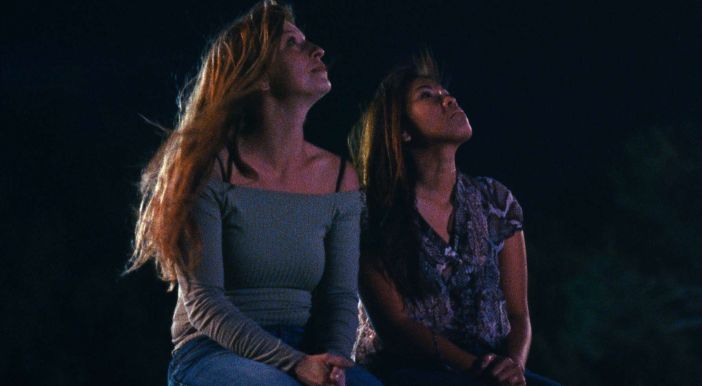
Do you see some of these characters in that way: becoming something greater than what you had planned?
That’s my aim. It’s what I want to accomplish with my films. I want to transform something very trivial, very ordinary—it can be the setting, it can be the actors, it can be the world—into a portrait that makes you reconsider your view, your sense, to say to yourself: “That’s true.”
For me the 16mm adds a timeless, almost ghost-like aura the film. This is a fake utopia, after all.
Exactly, and I like the fact that you mention ghosts. I don’t want the film to show real ghosts, of course, but everything contains a ghost. We’re full of ghosts, and we’re haunted by the death of a lot of people, and everyone in this film carries ghosts, even the sea—the Mediterranean carries the ghosts of the people who died on ships, on boats. Even the sun is a monster.
Can you talk a little about the political dimensions to the film, and how you approach politics through cinema?
I think the best films are the ones where you don’t see the political ideology of the director too much. I try to hide my opinions and politics as much as I can, and try to give the opportunity to other people, who I might not agree with, the time in the film to speak their point of view of the world. I’m more interested in seeing and depicting people that are different, people that might scare us. It excites me to try and film them and understand the interior of their mind, instead of just showing them from a distance. In a way it is distant, I guess, because it’s a non-psychological approach. But for example, the paramilitary unit. It’s true that I see a lot of neofascism around—you can see this kind of behavior everywhere: in France, throughout Europe, and in America, of course. What I want to do is try to understand this fantasy fear of evil, why these people are so afraid of other people, people alien to them. My goal is not to judge them, but to give them the time in the film to express themselves.
Is that one reason for giving the film a kind of fantastical sense, rather than a wholly realistic tone that might come off as didactic?
Yeah, sure, sure. It’s better.
How much of the film’s shape came forth in the editing process? Is what we see condensed from a large tapestry of stories?
The only big question I had going into the editing is where would I use the big long shot of the sun rising. Will it be at the beginning, the middle, or the end? I didn’t know what it would be for or where I would use it. I just shot it—a 10-minute shot of the sun rising. So that was the main editing problem. [Laughs] But to go back to the script: like I said, it was very structured. I said to myself while writing that I’m going to structure the film in a way where there will be plastic surgery/breast consultation scene at the beginning, to create a false atmosphere in the film of something humorous, of something very futile. By the end, when we return, it’s more sinister and morbid. As an audience, what might make you laugh at the beginning is something that by the end is not so funny. And that happens throughout the film, where we establish a certain tone, a certain atmosphere, and then later reveal its opposite. Sometimes what you should be feeling is more unclear. When you see the guy who has been duct-taped to the ceiling, for example, you don’t know if it’s funny or stressful.
Did you find it difficult to maintain that balance?
Yes, but I think that’s what I like most in the film. All the films I love have this quality, where you don’t know if you want to laugh or cry or be stressed. It’s so exciting when a film creates this kind of tension. I like the surreality of everyday life.
Jordan Cronk is a critic and programmer based in Los Angeles. He runs Acropolis Cinema, a screening series for experimental and undistributed films, and is co-director of the Locarno in Los Angeles film festival.



